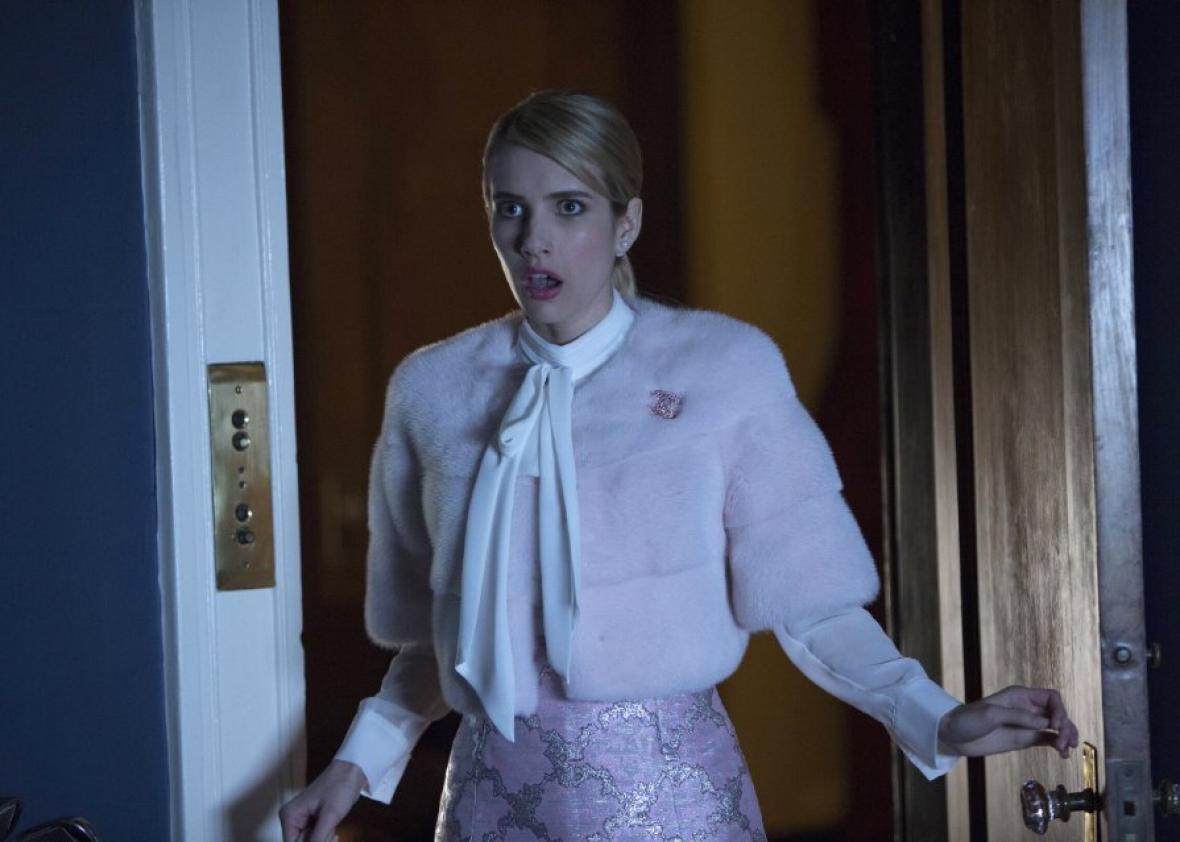Ryan Murphy’s Scream Queens made its slick, gruesome debut Tuesday night, and there was no shortage of gore. The bulk of the show takes place at a sorority house, where the plentiful murders get started early. They’re creative, they’re twisted, and yes, they’re loud. But some viewers may be left wondering: What exactly does the phrase “scream queen” mean?
In the 1930s, Fay Wray was dubbed a “scream queen” by the press after her shrieking performance as Ann Darrow in 1933’s in King Kong. After she’d shot her scenes, she spent a day in a sound studio screaming her head off to record what she called her “Aria of the Agonies.” She’d gained a reputation as Hollywood’s go-to actress for piercing pipes, but that notoriety came with a price: being typecast. Despite her ambitions to make a name for herself in other genres, when Wray walked into auditions, casting directors always asked her to scream. “I don’t like it at all, being called a Scream Queen,” Wray admitted decades later in an interview. Apparently, being a horror icon was less like being a “queen” and more like a career-limiting curse.
But the role of the “scream queen” has clearly changed a lot since the days when Wray “yelled every time they said, ‘Yell.’ ” Eventually helpless, panicky damsels like Darrow and Marion Crane (portrayed by Jamie Lee Curtis’ mother, Janet Leigh) in Psycho started to feel like a cliché. When Curtis starred in 1978’s Halloween in an iconic turn as Laurie Strode, she had to do a lot more than scream; she’s also scrappy. She stabs the killer, Michael Myers, with multiple weapons. (But, this being 1978, she still needed to be rescued—Dr. Sam Loomis eventually shoots the killer off the balcony.) With Halloween, the “scream queen” began to evolve into what Carol Clover labeled the “final girl” in her 1992 book: the single surviving female in a horror movie who tended to be pretty and virginal, but was also smarter and more resourceful than her predecessors.
Initially, Curtis allegedly worried that she would be typecast as a scream queen in the way Wray had been, but for her, Halloween turned out to be a launching pad. And since then, the sisterhood of mainstream scream queens has continued to evolve: Neve Campbell’s Sidney has sex in Scream (1996), and Heather Langenkamp’s heroine in A Nightmare on Elm Street (1984) had more nuanced motivations than simply survival (although that is high on her priority list); she also wanted to uncover the truth about her own childhood. Plenty of movies still follow the old formulas of female victimhood and virtuousness, but just as many are eagerly bucking the trend.
So perhaps the most exciting thing about Ryan Murphy’s Scream Queens is how it reflects and honors that evolution. It’s a humorous cross-generational nod to the women of horror. In a wink at how far scream queens have come, Curtis’ role as dean Cathy Munsch is also a sly send-up of her Halloween role. As Laurie Strode, Curtis was chaste and delicate, but in Scream Queens, she is decidedly neither. Instead, she’s a lascivious dean who sleeps with students and smokes pot—when she’s not busy trying to destroy the sorority run by Emma Roberts, that is. And she does all of this gleefully, without a hint of remorse.
Murphy has already said that only four of 25 characters in Scream Queens’ first season will survive. It will be interesting to see how Roberts’ and Curtis’ characters fare in the face of whoever is mowing down innocent victims in a devil suit. But regardless of whether they last until the end, it is a kind of twisted progress that the “scream queen” is not a sweet, helpless ingénue anymore—she may even be a killer herself.
